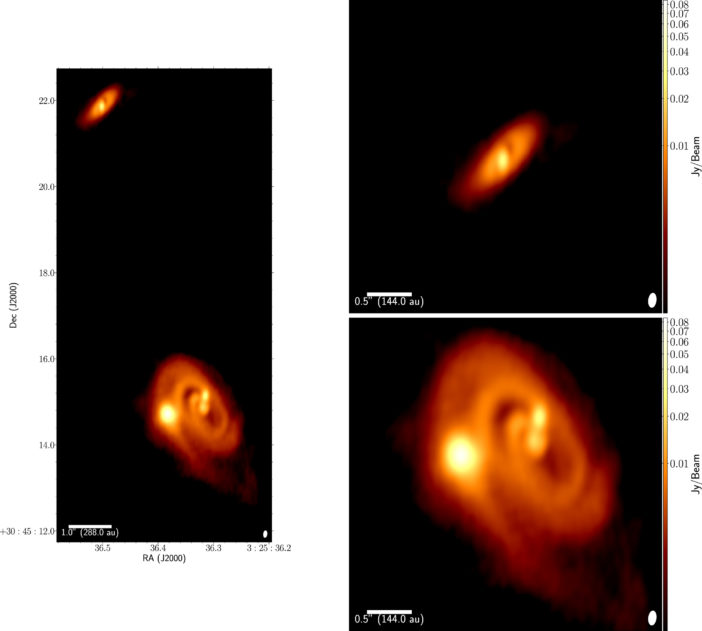How do systems of multiple stars form in the dense cores inside molecular clouds? Systems like the one captured above, L1448 IRS3B and A, may help us to better understand this process. In the image shown above (and again below, with scales and color bars), the triple protostar system IRS3B is seen in the process of forming from a surrounding (circum-triple) disk of molecular gas and dust. An additional disk can be seen at the opposite end of the image: IRS3A, a wide companion that lies 2,300 au away. In a recent study led by Nickalas Reynolds (University of Oklahoma), a team of scientists peered deep into the Perseus molecular cloud with the Atacama Large Millimeter/submillimeter Array (ALMA) to produce these images and study IRS3B and A. Reynolds and collaborators determine from their observations that the disk of IRS3B is gravitationally unstable at radii of 200–500 au, and its fragmentation may have recently produced the third protostar in IRS3B (visible as the outer bright spot in the circum-triple disk), which lies at 230 au. For more information, check out the full figure and the article below.

Left: ALMA 879 μm continuum observation of L1448 IRS3B (bottom) and A (top). Right: zoomed-in view of each of the two sources. Both protostellar systems are surrounded by disks, and the images of IRS3B reveal three bright sources forming within the circum-triple disk. [Reynolds et al. 2021]
Citation
“Kinematic Analysis of a Protostellar Multiple System: Measuring the Protostar Masses and Assessing Gravitational Instability in the Disks of L1448 IRS3B and L1448 IRS3A,” Nickalas K. Reynolds et al 2021 ApJL 907 L10. doi:10.3847/2041-8213/abcc02
